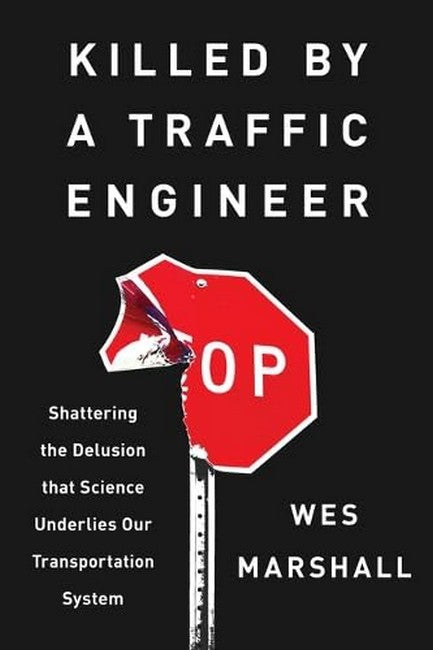Killed by a Traffic Engineer
Killed by a Traffic Engineer
SKU:9781642833300
Share
Thoroughly researched and compellingly written, Killed by a Traffic Engineer is the first book to uncover the lack of science behind traffic engineering, leaving readers inspired to take action and demand streets engineered for the safety of people
In the US we are nearing four million road deaths since we began counting them in 1899. The numbers are getting worse in recent years, yet we continue to accept these deaths as part of doing business. There has been no examination of why we engineer roads that are literally killing us.
Fixing the carnage on our roadways requires a change in mindset and a dramatic transformation of transportation. This goes for traffic engineers in particular because they are still the ones in charge of our streets.
In Killed by a Traffic Engineer, civil engineering professor Wes Marshall shines a spotlight on how little science there is behind the way that our streets are engineered, which leaves safety as an afterthought. While traffic engineers are not trying to cause deliberate harm to anyone, he explains, they are guilty of creating a transportation system whose designs remain largely based on plausible, but unproven, conjecture.
Thoroughly researched and compellingly written, Killed by a Traffic Engineer shows how traffic engineering “research” is outdated and unexamined (at its best) and often steered by an industry and culture considering only how to get from point A to B the fastest way possible, to the detriment of safety, quality of life, equality, and planetary health. Marshall examines our need for speed and how traffic engineers disconnected it from safety, the focus on capacity and how it influences design, blaming human error, relying on faulty data, how liability drives reporting, measuring road safety outcomes, and the education (and reeducation) of traffic engineers.
Killed by a Traffic Engineer is ultimately hopeful about what is possible once we shift our thinking and demand streets engineered for the safety of people, both outside and inside of cars. It will make you look at your city and streets—and traffic engineers— in a new light and inspire you to take action.
About the Author
About the Author
<p>Wes Marshall, PhD, PE, is professor of Civil Engineering with a joint appointment in Urban and Regional Planning at the University of Colorado Denver. He is also the director of the CU Denver Transportation Research Center and co-director of the Active Communities/Transportation (ACT) research group. He received his Professional Engineering license in 2003 and focuses on transportation teaching and research dedicated to creating a more sustainable and resilient world, particularly in terms of road safety. Having spent time in the private sector, Wes has been working on these issues for more than 25 years. With over 80 peer-reviewed publications, Wes was also the winner of the Campus-wide University of Colorado Denver Outstanding Faculty in Research Award.</p><br>
Couldn't load pickup availability


